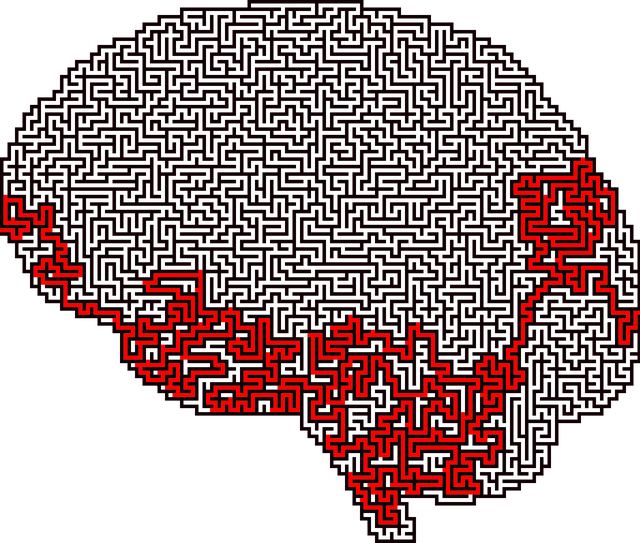Greenwood Village Cognitive Processing Therapy (GVCPT) emphasizes risk assessment as a cornerstone of its harm reduction strategies, focusing on cognitive restructuring and self-awareness exercises. This holistic approach prioritizes trauma-affected individuals, cultural sensitivity, and individualized therapy, fostering resilience through structured discussions, mindfulness activities, and a Mental Wellness Podcast Series. The implementation phase involves collaborative intervention planning and regular review to adapt to dynamic mental health conditions, ensuring improved patient outcomes and contributing to Mental Health Policy Advocacy.
Risk assessment and harm minimization planning are essential components of effective crisis management. This article guides you through a structured approach, starting with understanding risk assessment as a foundational step for harm minimization. We explore the Greenwood Village Cognitive Processing Therapy (GVCPT) method, a proven technique in mitigating risks. Additionally, we delve into developing comprehensive plans, implementation strategies, and continuous evaluation techniques to ensure optimal risk management. Adopt these practices for safer, more resilient communities, leveraging the insights from GVCPT therapy.
- Understanding Risk Assessment: A Foundation for Harm Minimization
- The Greenwood Village Cognitive Processing Therapy Approach
- Developing a Comprehensive Harm Minimization Plan
- Implementation and Continuous Evaluation for Effective Risk Management
Understanding Risk Assessment: A Foundation for Harm Minimization

Risk assessment is a fundamental process in identifying potential hazards and their consequences, serving as the cornerstone for effective harm minimization strategies. It involves a systematic analysis of various factors that could lead to adverse outcomes, enabling professionals to make informed decisions and implement appropriate interventions. By thoroughly understanding the risks within any given context, be it a therapeutic setting like Greenwood Village Cognitive Processing Therapy or broader community initiatives, practitioners can develop targeted strategies to mitigate potential harm.
This proactive approach is crucial in building resilience among individuals and communities, as it allows for the early identification of risks and the design of effective public awareness campaigns development. Moreover, it fosters emotional intelligence by encouraging individuals to recognize their vulnerabilities and develop coping mechanisms, ultimately enhancing overall well-being. Through rigorous risk assessment, Greenwood Village Cognitive Processing Therapy can ensure that their therapeutic practices not only address current challenges but also proactively safeguard clients from potential future dangers.
The Greenwood Village Cognitive Processing Therapy Approach

The Greenwood Village Cognitive Processing Therapy (GVCPT) Approach is a comprehensive method designed to help individuals navigate and overcome various mental health challenges. This therapy focuses on empowering clients through cognitive restructuring, where they learn to identify and challenge negative thought patterns that contribute to distress. By encouraging self-awareness exercises, GVCPT fosters an understanding of one’s thoughts, emotions, and behaviors, enabling better coping skills development.
The approach prioritizes a holistic view of mental wellness, incorporating techniques from various therapeutic practices. This includes structured discussions, mindfulness activities, and even the production of a Mental Wellness Podcast Series, allowing clients to explore and express their experiences. Through these methods, GVCPT aims to minimize harm by equipping individuals with the tools to manage their mental health effectively and promote long-term resilience.
Developing a Comprehensive Harm Minimization Plan

Developing a comprehensive harm minimization plan is an integral part of responsible mental healthcare practice, and Greenwood Village Cognitive Processing Therapy (CPT) stands at the forefront in this approach. This method involves meticulously assessing potential risks within therapeutic settings, especially for individuals dealing with trauma. By implementing strategic interventions, therapists can ensure a safe environment that supports healing while mitigating any harm.
The process includes identifying vulnerable populations, evaluating cultural sensitivity in mental healthcare practice, and tailoring therapy to meet individual needs. Effective risk management planning incorporates Trauma Support Services, ensuring clients receive the highest level of care. Through continuous evaluation and adaptation, Greenwood Village CPT promotes not just recovery but also fosters a culture of resilience and well-being among its clients.
Implementation and Continuous Evaluation for Effective Risk Management

The implementation phase of risk assessment and harm minimization planning is a critical step in ensuring effective mental health care, particularly when utilizing therapeutic approaches like Greenwood Village Cognitive Processing Therapy. It involves translating risk factors and potential harms identified during assessment into actionable strategies. This process requires collaboration between healthcare providers, therapists, and support staff to develop comprehensive interventions tailored to individual needs. Regular review and adaptation of these plans are essential, as the dynamic nature of mental health conditions demands continuous evaluation.
Through ongoing monitoring and re-assessment, healthcare professionals can gauge the effectiveness of implemented strategies, identify emerging risks, and make necessary adjustments. This cycle of implementation and evaluation fosters a responsive approach to treatment, allowing for self-esteem improvement and addressing broader Mental Health Policy Analysis and Advocacy concerns. By adhering to this rigorous standard, mental health services can enhance patient outcomes and contribute to increasing Mental Health Awareness, ultimately enhancing the overall well-being of individuals seeking support.
Risk assessment and harm minimization planning are vital components of any comprehensive strategy aimed at ensuring safety and well-being. By understanding the foundational principles of risk assessment, adopting innovative approaches like the Greenwood Village Cognitive Processing Therapy, and implementing robust plans that incorporate continuous evaluation, we can significantly mitigate potential harms. These strategies not only enhance our ability to navigate complex scenarios but also foster a safer, more supportive environment for all.













